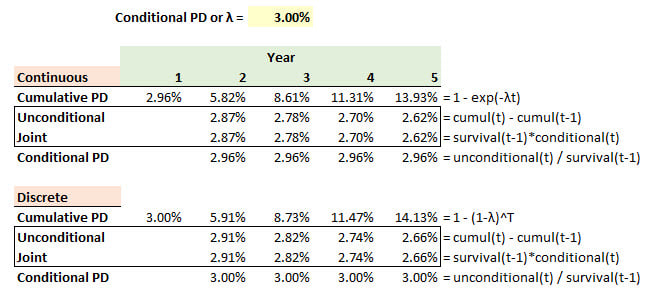Hi I was trying to understand the difference between Joint Probability and Conditional Probability
I came across this post of yours.
https://forum.bionicturtle.com/threads/p2-t6-307-hazard-rate-malz-section-7-2.6932/#post-42375
AND
What I do not understand is the difference between both. The wordings of both appear to be the same.
In this case what would Joint Probability exactly signify, and what would Conditional Probability signify ?
Also, what would this mean : "Probability of survival in first year followed by default in second year". Would this be joint probability or conditional probability ? If it means one of the above, how would you phrase the other one (ie. if the above term means joint probability, how would you phrase conditional probability as a question) ?
I apologise if the question was a foolish one. However I am having really hard time trying to grasp these concepts.
Thanks a lot.
I came across this post of yours.
https://forum.bionicturtle.com/threads/p2-t6-307-hazard-rate-malz-section-7-2.6932/#post-42375
conditional default probability in the 2nd year; i.e., the probability of default in year 2 conditional on survival through the end of the previous year
AND
Unconditional / Joint Default Probability Hull does refer to this as unconditional because it is "unconditional" as seen from Time zero,
What I do not understand is the difference between both. The wordings of both appear to be the same.
In this case what would Joint Probability exactly signify, and what would Conditional Probability signify ?
Also, what would this mean : "Probability of survival in first year followed by default in second year". Would this be joint probability or conditional probability ? If it means one of the above, how would you phrase the other one (ie. if the above term means joint probability, how would you phrase conditional probability as a question) ?
I apologise if the question was a foolish one. However I am having really hard time trying to grasp these concepts.
Thanks a lot.


